The curriculum is sequenced coherently, allowing the interweaving of topics to support the acquisition of key concepts; it is compatible with the key requirements of the National Curriculum and robust collaboration between primary and secondary phases ensures progression.
Curriculum components are repeated over time, ensuring all pupils practise retrieval, master skills and concepts, develop long term memory and make progress from starting points. Retrieval tasks are built into all lessons to enable pupils to remember more.
The ‘Bigger Picture’ is shared with pupils, providing them with a rationale for their learning and to make links between lessons, allowing them to know more and remember more.
Teachers ensure lessons provide a supportive environment for all pupils including those with SEND, removing barriers to learning and participation through adaptive planning, modelling, scaffolding, explicit instruction and metacognitive strategies.
Accurate, regular assessment enables an informed and systematic judgement to be made about a pupil’s knowledge, understanding, skills and attitude. Pupils are provided with feedback and set ‘perfecting our work’ targets to close any learning gaps.
Teachers provide a language-rich environment. Key tier 2 and tier 3 vocabulary is mapped out carefully across the curriculum to enable our pupils to learn the correct words and phrases in the right order. A phonics-led approach is used to improve reading and spelling. Carefully selected texts are used to foster a culture of scholarly reading.
Pupils are given opportunities to consider how their learning links to future study and careers, and the importance of British Values.
The Art curriculum is enriched to include experiences outside the classroom, such as:
- Being involved with competitions
- Exhibiting work to showcase student talent
- Creating murals or displaying art work around the school
- Providing art clubs to encourage bespoke art material development
Homework tasks allow pupils to:
-consolidate learning
-complete artwork to show effective progress and sketchbook cohesion
-promote independent learning
-ensure skills and techniques are practiced at home
-identify misconceptions and targets for students
GCSE Assessment Objectives
AO1: Develop ideas through investigations, demonstrating critical understanding of sources.
AO2: Refine work by exploring ideas, selecting and experimenting with appropriate media, materials, techniques and processes.
AO3: Record ideas, observations and insights relevant to intentions as work progresses.
AO4: Present a personal and meaningful response that realises intentions and demonstrates understanding of visual language.
Practical Work
In Component 1 (portfolio) students develop responses to initial starting points, project briefs or specified tasks and realise intentions informed by research, the development and refinement of ideas and meaningful engagement with selected sources. Responses will include evidence of drawing for different purposes and needs and written annotation.
In Component 2 (externally set assignment) students respond to a starting point provided by AQA. This response provides evidence of the student’s ability to work independently within specified time constraints, realise intentions that are personal and meaningful and explicitly address the requirements of all four assessment objectives.
Literacy
Students are required to annotate their portfolios and artwork to show reflection. They will analyse artist style and comment of influences that they have used in their work.
Key Stage 5 Assessment Objectives
Assessment objective 1 Develop ideas through sustained and focused investigations informed by contextual and other sources, demonstrating analytical and critical understanding.
Assessment objective 2 Explore and select appropriate resources, media, materials, techniques and processes, reviewing and refining ideas as work develops.
Assessment objective 3 Record ideas, observations and insights relevant to intentions, reflecting critically on work and progress
Assessment objective 4 Present a personal and meaningful response that realises intentions and, where appropriate, makes connections between visual and other elements.
Component 1: Personal investigation
This is a practical investigation supported by written material.
Students are required to conduct a practical investigation, into an idea, issue, concept or theme, supported by written material. The focus of the investigation must be identified independently by the student and must lead to a finished outcome or a series of related finished outcomes.
The investigation should be a coherent, in-depth study that demonstrates the student’s ability to construct and develop a sustained line of reasoning from an initial starting point to a final realisation.
The investigation must show clear development from initial intentions to the final outcome or outcomes. It must include evidence of the student’s ability to research and develop ideas and relate their work in meaningful ways to relevant critical/contextual materials.
The investigation must be informed by an aspect of contemporary or past practice of artists, photographers, designers or craftspeople.
The written material must confirm understanding of creative decisions, providing evidence of all four assessment objectives by:
- clarifying the focus of the investigation
- demonstrating critical understanding of contextual and other sources
- substantiating decisions leading to the development and refinement of ideas
- recording ideas, observations and insights relevant to intentions by reflecting critically on practical work
- making meaningful connections between, visual, written and other elements.
The written material must:
- be a coherent and logically structured extended response of between 1000 and 3000 words of continuous prose.
- include specialist vocabulary appropriate to the subject matter
- include a bibliography that, identifies contextual references from sources such as: books, journals, websites, through studies of others’ work made during a residency, or on a site, museum or gallery visit
- be legible with accurate use of spelling, punctuation and grammar so that meaning is clear.


